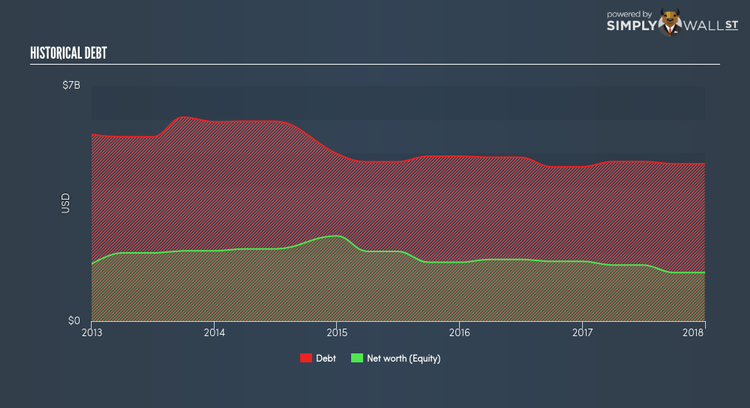OCI NV. (AMS:OCI): Time For A Financial Health Check

Small and large cap stocks are widely popular for a variety of reasons, however, mid-cap companies such as OCI NV. (ENXTAM:OCI), with a market cap of €4.22B, often get neglected by retail investors. While they are less talked about as an investment category, mid-cap risk-adjusted returns have generally been better than more commonly focused stocks that fall into the small- or large-cap categories. OCI’s financial liquidity and debt position will be analysed in this article, to get an idea of whether the company can fund opportunities for strategic growth and maintain strength through economic downturns. Remember this is a very top-level look that focuses exclusively on financial health, so I recommend a deeper analysis into OCI here. See our latest analysis for OCI
Does OCI generate an acceptable amount of cash through operations?
OCI has sustained its debt level by about US$4.68B over the last 12 months made up of current and long term debt. At this stable level of debt, OCI currently has US$231.00M remaining in cash and short-term investments , ready to deploy into the business. Additionally, OCI has generated cash from operations of US$181.70M during the same period of time, leading to an operating cash to total debt ratio of 3.88%, signalling that OCI’s current level of operating cash is not high enough to cover debt. This ratio can also be a sign of operational efficiency for unprofitable businesses as traditional metrics such as return on asset (ROA) requires positive earnings. In OCI’s case, it is able to generate 0.039x cash from its debt capital.
Can OCI pay its short-term liabilities?
Looking at OCI’s most recent US$1.60B liabilities, it appears that the company has not maintained a sufficient level of current assets to meet its obligations, with the current ratio last standing at 0.46x, which is below the prudent industry ratio of 3x.
Can OCI service its debt comfortably?
Since total debt levels have outpaced equities, OCI is a highly leveraged company. This is not unusual for mid-caps as debt tends to be a cheaper and faster source of funding for some businesses. However, since OCI is currently unprofitable, sustainability of its current state of operations becomes a concern. Running high debt, while not yet making money, can be risky in unexpected downturns as liquidity may dry up, making it hard to operate.
Next Steps:
OCI’s high debt level indicates room for improvement. Furthermore, its cash flow coverage of less than a quarter of debt means that operating efficiency could also be an issue. In addition to this, its low liquidity raises concerns over whether current asset management practices are properly implemented for the mid-cap. This is only a rough assessment of financial health, and I’m sure OCI has company-specific issues impacting its capital structure decisions. I suggest you continue to research OCI to get a better picture of the stock by looking at:
Future Outlook: What are well-informed industry analysts predicting for OCI’s future growth? Take a look at our free research report of analyst consensus for OCI’s outlook.
Valuation: What is OCI worth today? Is the stock undervalued, even when its growth outlook is factored into its intrinsic value? The intrinsic value infographic in our free research report helps visualize whether OCI is currently mispriced by the market.
Other High-Performing Stocks: Are there other stocks that provide better prospects with proven track records? Explore our free list of these great stocks here.
To help readers see pass the short term volatility of the financial market, we aim to bring you a long-term focused research analysis purely driven by fundamental data. Note that our analysis does not factor in the latest price sensitive company announcements.
The author is an independent contributor and at the time of publication had no position in the stocks mentioned.

